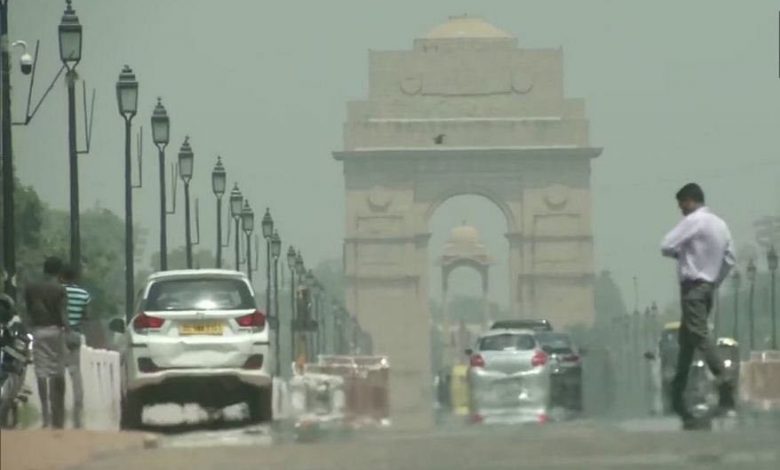July 2023, The Hottest Month In 120,000 Years
Temperatures will continue to increase and extreme weather will worsen until the world drastically cuts fossil fuel use and reaches net-zero emissions

July is the hottest month in 120,000 years – with an average temperature about 1.5°C hotter than the planet was before it was warmed by burning coal, oil and gas, and human activities – according to an analysis by Dr Karsten Haustein, a climate scientist at Leipzig University.
While global temperatures have been rising dramatically in recent years, the effect has been somewhat suppressed as the world was in a La Niña (cooling) cycle. Now it looks as though the planet is entering an El Niño (warming) cycle, which will allow global warming to reach new heights.
In July 2023 we have seen : Ocean waters in Florida reach 101.19F (38.43C), Hottest night ever recorded globally in Death Valley, USA was 120F/48.9C after midnight. Hottest night ever recorded in Algeria recorded a record high daily minimum temperature of 39.6C. which is a silent killer according to the Doctors. Hottest day ever recorded in China: 52.2C. 27 Record consecutive days above 35C in Beijing also national record for Vatican City. Mumbai had its wettest July ever, while record rainfall was recorded in Lahore, Pakistan.
Temperatures will continue to increase and extreme weather will worsen until the world drastically cuts fossil fuel use and reaches net-zero emissions. This month’s average global temperature is projected to be 1.3-1.7°C above the average July temperature before humans began warming the planet by burning fossil fuels – hotter than the previous record, July 2019, by 0.2°C, meaning it is now virtually certain that July will set a new global temperature record.
Extreme weather around the world in July
The increase in rainfall intensity and frequency of heatwaves are direct impacts of rising sea and surface temperatures. Climate change-led warming has made the Indian monsoon violent and erratic, furthering the risk of flooding through shifts in rainfall patterns. More warming has infused additional moisture into the atmosphere, leading to unprecedented weather events, such as in Northwest India. Not only has monsoon variability increased due to rising heat, but these events have become less predictable, posing another set of challenges. Here is a list of extreme weather events that occurred globally in July and their consequences.
The fact that the temperature rise this month has reached 1.5°C does not mean that governments have yet permanently failed to limit warming to the 1.5°C limit set in the Paris Agreement as average warming is measured on a longer-term timescale. This is not the first time a month has been at, or more than, 1.5°C above the pre-industrial average: it previously happened in 2016 and 2020, though this is the first time it has happened in the Northern Hemisphere summer when the planet is hotter. But the fact this month’s temperature increase is at the agreed maximum long-term level reflects the fact that, while the limit has not yet been broken, actions to cut emissions are still inadequate and the world is on course to fail to uphold the agreement.
Other climate scientists had warned that July was likely to be the hottest month on record, but Dr Haustein’s analysis is the first to confirm it and estimate the month’s average temperature. (Below, you will find contact details of scientists at other institutions who are available to comment on Dr Haustein’s analysis and more details about Dr Haustein’s methodology.)
July heat records: several places in the Philippines, Trujillo in Peru had warmest July night, Antarctica broke July heat records on the peninsula and at the South Pole, record July temps in the Alps (Liechtenstein, Switzerland, Austria, Germany), July records fell in parts of France, parts of Germany, Czechia, parts of Brazil, Mauritius, parts of Japan, also highest nighttime temperatures in Japan, record warm nights in parts of Australia, parts of New Zealand, mountainous parts of Iran, parts of Morocco, Tunisia, parts of Spain, Dominican Republic, Haiti, New Mexico, parts of Italy, parts of Bosnia, Thailand, Vietnam, China, parts of New Mexico tied July record, parts of Canada, Kazakhstan, Colombia, Wallis and Futuna, parts of Greece, Argentina, Bolivia, Mayotte, Dominica, Malta tied its national July record, parts of Cuba,
July floods : Other parts of the world are suffering from unprecedented flooding, with thousands being evacuated daily. In the US, historic flooding submerged homes in Vermont, northern New York, and southwestern Kentucky and in Lahore, Pakistan, record-breaking 291 mm rainfall killed at least 50 – 8 of which were children. Record monsoon rains hit parts of India, causing roads, bridges and houses to collapse; the death toll now surpassed 100. Mumbai has now had the wettest July ever, with a total of 1557.8mm of rain so far. The Yamuna River in New Delhi reached its highest level ever, while unprecedented floods around Delhi have forced thousands to leave their homes, with widespread flooding and deaths across the rest of India and also Afghanistan, Pakistan, and Bhutan. In South Korea, over 40 people died due to floods – at least 7 of whom were trapped in their vehicles in a tunnel during the flood. Kurume, in southwest Japan, reported 402.5 mm of rain, the highest ever recorded, while Fukuoka, Yamagucho and Shimane were also heavily affected by the rain – over 1.7 million residents were impacted. Devastating floods were experienced in Guatemala and Somalia, where the rain destroyed crops and inundated whole villages. China’s Hunan saw its worst flooding in 50 years, which caused widespread damage and casualties in parts of Chongqing and Yunnan too. Similar devastating floods were seen in Indonesia and Brazil. Parts of Ireland were flooded after the second wettest 24 hours on record for those counties.
Food security : Countries not directly impacted by climate catastrophes might feel its effects later on in 2023, as harvests from climate-vulnerable countries and crop-producing regions are hit by extreme heat, drought and flooding, having implications for the global breadbasket. In particular, scientists say that heatwaves are threatening food security because of major crop losses in different regions – such as soybean and rice – affecting global prices and food availability. So far impacts to agriculture in July include: Indian government banned export of non-basmati white rice due to rain, triggering panic buying and price rises abroad, crops damaged in Mexico, US, Italy, Spain, North Africa, Iraq, China, Australia due to heatwaves, farmers cannot plant less rice in Thailand due to drought, drought is affecting crops in Uruguay, milk production down in Puerto Rico, Italy due to heat, livestock dying of heat in Mexico, Niger, the heatwave is set to affect Caribbean and Mediterranean fisheries, hail affected crops in Italy. Due to flooding, particularly in Ivory Coast, cocoa prices are up more than 25% in 12 months. Cereal production in southern Europe is expected to fall by up to 60% compared to last year due to the summer heatwaves, and will likely be the lowest harvest since 2007. Northern Italian tomatoes down 15% due to floods, price rises on the way.
The writer of this article is Dr. Seema Javed, an environmentalist & a communications professional in the field of climate and energy




